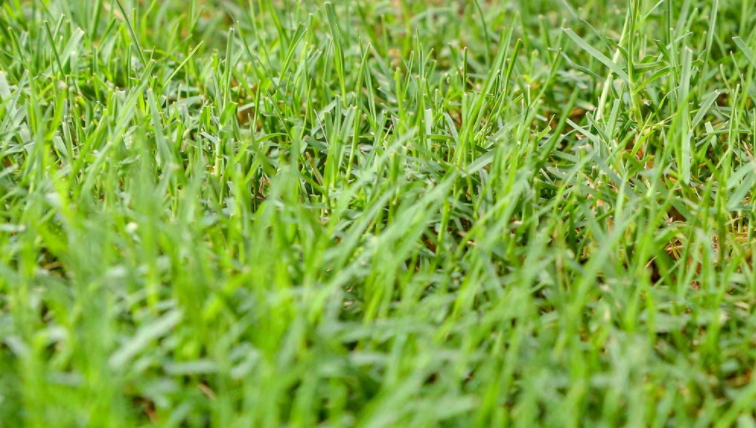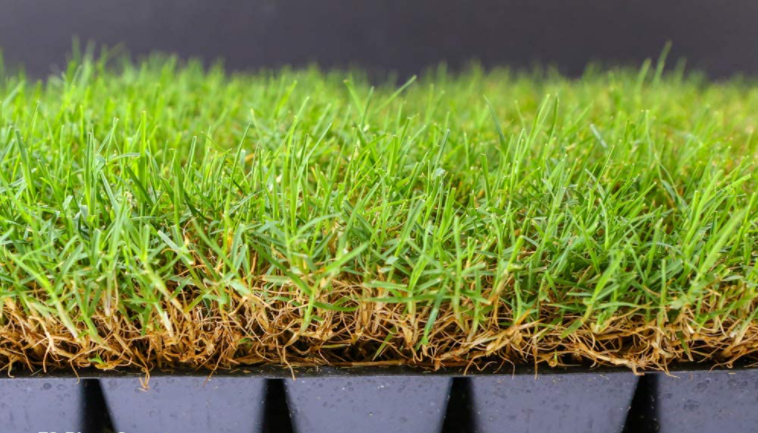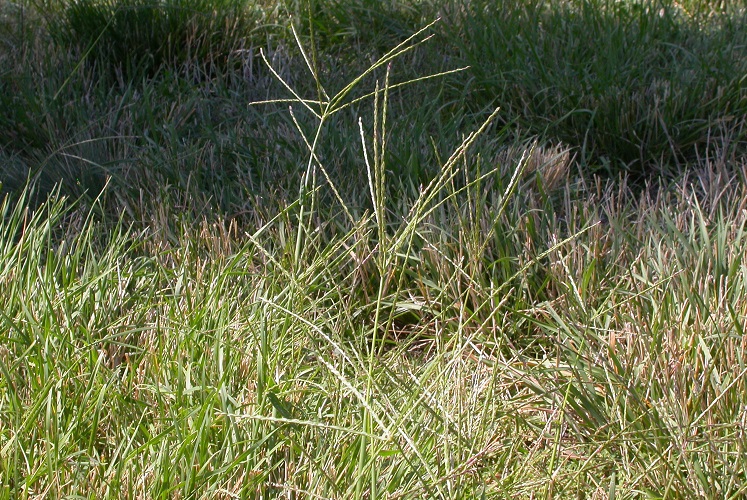- How to Get Rid of Spurge Weed - December 24, 2021
- Guide to Craftsman LT2000 Parts: Where to Find Them Online? - July 15, 2021
- The Best Time to Spray Dandelions: Tips, Tricks and More - January 9, 2021
There are plenty of similarities between bermuda grass and crabgrass. For instance, they grow quickly, bully other plants, and overwhelm your lawn if you don’t control them.
However, you may not know that bermuda grass, if you can control it, makes a beautiful, thick, luscious, and attractive lawn. On the other hand, Crabgrass is never a desirable turf, but it’s also not hard to get a handle on.
Main Differences Between Bermudagrass and Crab Grass
The main differences between Bermuda grass and Crab grass are:
- Bermudagrass makes a thick, lovely, and desirable turf, whereas crab grass is a weed that no one wants to have on their lawn.
- Bermudagrass when cared for properly, feels luscious under your feet, whereas crab grass is unsightly and rough-textured.
- Bermudagrass grows best in the south, whereas crab grass grows in all climates.
About Bermudagrass

Bermudagrass comes from tropical and subtropical countries. It seems to have already been established in the southern United States as early as 1807. It’s a perennial grass that comes back every year and is active from late spring through the summer (early spring in some Southern climates).
It’s more sensitive to cold than other warm-season grasses like Zoysia or even cool-season grasses like fescue. For this reason, it can’t be used very far north. It needs a full, direct sun with good drainage.
It has superior tolerance to heat, humidity, and salt, but it’s drought tolerant as well. Most of the bermudagrass roots will stay within 6 inches of the surface, but they can dig as much as 6 feet underground when needed. The extensive root system offers resilience to environmental stresses. While it’s frequently used as turf, it’s also used for livestock.
It grows low and spreads rapidly via the stolons that grow above the grounds and the rhizomes that grow below the ground. It does a great job of filling in bare spots. It has a medium texture with smooth leaves. The hairs at the base are fine, and it makes for a lush feeling on bare feet.
The leaves are dark green during the growing season and then turn brown after the first frost. However, in frostless climates, it can and will stay green all year long.
While its growth habits are aggressive, it’s only a problem in the landscape when it’s not controlled. It is invasive and will spread into flower beds or paved areas without edging. If it does spread, it’s challenging to eradicate, so managing it is imperative.
Growing conditions, characteristics, and treatment
Bermudagrass will adapt to many different types of soil, but it grows best in fertile soils. It’s a warm-season grass that can tolerate both humid and arid climates, but it will go dormant in the winter.
It establishes deep roots, so it’s heat and drought resistant. It’s a great turfgrass in the south because it can survive hot, humid summers. It can also tolerate heavy foot traffic, so it’s the perfect lawn for large families in suburban environments.
It does need regular maintenance like fertilization and watering to keep its color, which is a rich, beautiful dark green.
While common bermudagrass can be coarse, there are several other hybrid versions that have fine textures that are perfect for lawns with heavy foot traffic.
Growth and spreading
What makes bermudagrass such an aggressive grower is that it spreads by creeping. Unless it’s contained, it will continue to creep outside of its bounds. It will quickly become a weed invading your driveway, sidewalk, flower beds, and everywhere else you don’t want it.
It’s valued for its ability to survive heat and drought. It can withstand heavy use and recuperate quickly. It’s this combination of exceptional qualities that make it a popular choice for homeowners throughout the United States, but it’s also used on athletic fields and golf course tee areas.
It’s tough and resilient, but it can be a high-maintenance pain if you’re not up for the task.
Planting and care

Many lawns are started from sod, but bermudagrass is unique in that it can be started from seed. This gives you a lot of options and advantages over other grass types when it comes to planting a new lawn or filling in bare spots. You can easily plant seeds of the same type and as it grows over it will fill in and match the grass you already have. It’s much easier than trying to match sod or other seeds, which end up making your lawn look patchy.
Lawn care for bermuda grass will follow a different timetable than other grasses. It’s best planted in the spring after the final frost when warm-season grasses are coming out of their dormancy and entering prime growth. You can also use this time to overseed your existing bermuda grass lawn.
The aggressive growth rate of bermudagrass means more maintenance like monthly fertilization during peak growth as well as mowing twice every week. The recommended height is 1 to 1 ½ inches for home lawns.
During periods of extended drought, the grass will go dormant, so if you want your bermudagrass to remain green through the dry, hot summer months, it will require some watering. Give your lawn 1 to 1 ½ inches of water to prevent this dormancy.
It will also grow best when your soil pH is between 5.8 and 7, however it can tolerate alkaline conditions. If you have overly acidic soil, you may want to apply regular deposits of lime to keep your pH at better nutritional levels. While crabgrass is also an aggressive grower, it typically can’t compete with a bermudagrass lawn.
By properly maintaining your bermudagrass, it can usually compete with crabgrass on its own without help from you. Crabgrass will have a difficult time getting a foothold in a bermudagrass lawn that is well maintained.
Pros:
- Heat and drought tolerant
- Can withstand heavy foot traffic
- Recuperates quickly
- Fills in bare spots
- Fine varieties are perfect for lawns
Cons:
- High maintenance
- Requires watering and nutrients
About Crabgrass

Springtime brings leaves on trees, blooming flowers, and gorgeous green grass. We welcome the renewing of the ground until we see the crabgrass. Out of this abundance, comes an overgrowth of possibly the most rapidly growing, most annoying weed on the planet.
It frustrates homeowners because it seems like it’s virtually impossible to get rid of. There are two common species of crabgrass in the United States and there’s virtually no good use for it. They’re simply weeds that invade flower beds, turfgrass, and farm fields.
It grows low to the ground and spreads wide with nodes on the stems that take root wherever they rest. Luckily, the roots are shallow and easy to pull. However, they can also spread by dispersing seeds, so pulling them up is a losing battle.
The mature plants have smooth dark leaves that can be up to 5 inches long. The plants grow together in large, dense clumps and they’re unsightly. They ruin the look of anything they invade.
They germinate during the spring and last all summer long. But did you know that ungerminated seeds may lay dormant underground for up to 30 years before sprouting? And a single crabgrass plant can produce up to 150,000 seeds in one growing season. Yuck!
No wonder you feel like you can’t control it.
Growing conditions, characteristics, and treatment
Crabgrass loves sandy, compact soil where the grass is weak and thin. If you don’t care for your lawn, it will be a breeding ground for crabgrass. Crabgrass loves direct sunlight, and bare lawns allow sunlight to hit the soil directly.
Crabgrass also loves excess water. Guess what else has direct access to the soil when the grass isn’t in the way? That’s right! Water.
Once it takes root, it’s aggressive growth habits can be nearly impossible to stop. It will thrive in even the harshest conditions and will spread when your other plants are struggling, making it even more discouraging for you.
However, because it targets lawns that are thin or in distress, taking good care of your lawn and densely planting your other flora and fauna will help ward away crabgrass.
Crabgrass has very shallow roots, and there are a few different types. Every variety has a thick heavy stem and none of them like shade. You can treat it before it arrives in the spring and before the temperature reaches 60 degrees Fahrenheit with a pre-emergent herbicide.
Prevention

As you can see, the deck is already stacked against you. Pulling crabgrass is easy, but as you pull, thousands of seeds fall to the ground and resow themselves. They lay dormant for years, just waiting to pop up at the worst possible time.
The key to preventing it is to work the turf in your favor. Make sure your turf has the best possible growing conditions, and it will choke out most of the weeds. You also need to make sure you have the right turf for your area. Giving your turf ideal growing conditions and taking care of it properly will ensure that your grass grows thick and luscious. This will prevent bare spots and other ideal growing conditions for crabgrass.
While it may not completely ward off all crabgrass, it’s the best way to prevent future crabgrass growth. It’s the most simple change you can make. You can also adjust your mower’s height to allow your grass to grow at its optimal level. The higher your grass grows above ground, the deeper the roots will be underground. This makes it harder for anything else to take root.
Also, make sure you’re aerating and overseeding to decrease the presence of crabgrass. Fertilize your lawn to make sure the soil has the proper amount of nutrients so your grass with be healthy enough to fight back against crabgrass and all other weeds.
If it’s mid-summer and full-grown crabgrass is still kicking you in the tail, you can treat it with an herbicide that is specifically labeled for crabgrass control. This should always be your last option because it can be bad for the rest of your lawn.
FAQs
Answer: Actually, nothing. There is nothing inherently wrong with crabgrass at all. It’s not dangerous to the environment. It’s just ugly. It doesn’t make a good lawn because it doesn’t look good and it’s certainly not soft. It doesn’t feel good to walk on.
In fact, the stems are thick and the leaves have rough edges, so they can be abrupt or sharp on your feet as you step on them. It’s simply not a type of grass that works well as turf. It’s a weed that people prefer to get rid of. Plus, it can dominate your lawn and simply take over everything else that’s beautiful. So while it’s not harmful to you or the environment, it can take out pretty much everything else you’ve spent your time on.
It’s an opportunistic plant that will take advantage of bare or weak spots in your lawn and spread like wildfire. Before you even realize it, you’ve been dominated and it may be too late to get rid of it.
It’s important to tackle your crabgrass problem before it even starts in the spring. If you let your crabgrass problem go, it will die with the first frost, turn brown, and look even worse than it did before. Not only that, but it will come back worse next year.
Answer: Bermuda grass is considered a weed by many people, so when it’s properly cultivated, it can overpower many other weeds on its own. If you mow your bermudagrass to the proper height, water it, fertilize it, and care for it as you should, it will be able to compete with crabgrass and other weeds without much help from you.
Question: Why does my bermudagrass turn brown after mowing?
Answer: Bermudagrass, like most weeds, is fast-growing and spreading. You’ll have to mow often and cut it short. It likes to be cut short, and if you cut it short, it will be thick and beautiful. Letting it grow too long will block sunlight from getting to the bottom part of the blades of grass, which will cause it to get woody while the top of the grass will remain green.
When the bottom half of your grass is brown, and you mow it down, you reveal only the brown grass, which results in a brown lawn. Make sure you continue to mow your lawn short, so the sunlight reaches the entire lawn, keeping it green. Consequently, keeping your lawn mowed shorter will also keep it thicker.
Final Thoughts on Crabgrass vs Bermuda Grass
There’s no denying that bermuda grass and crabgrass have some remarkable similarities. However, their differences are enough to set them apart in such a way that bermudagrass makes for an excellent lawn, while crabgrass is still just an undesirable weed.
If you live in the right climate for it, bermudagrass may be the perfect solution for you. It can help you choke out crabgrass and other weeds with proper maintenance and make a beautiful turf for your home.
Further Reading on Bermuda Lawn Grass & Crabgrass Types:

